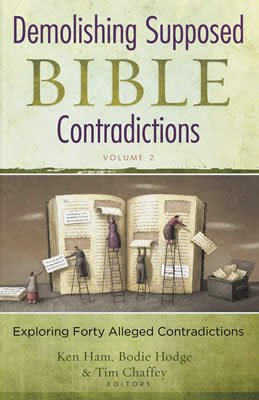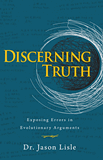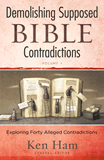
When Was the Temple Veil Torn in Two?
Matthew and Mark state that the temple veil ripped right after Jesus died, but Luke states that it happened before the Lord’s death. Tim Chaffey, AiG–U.S., explains.
The “Problem”
The Gospel accounts seem to disagree as to when the temple veil was torn in two in relation to Christ’s death. A quick look at the relevant passages will highlight this supposed contradiction.
And Jesus cried out again with a loud voice, and yielded up His spirit. Then, behold, the veil of the temple was torn in two from top to bottom; and the earth quaked, and the rocks were split. (Matthew 27:50–51)
And Jesus cried out with a loud voice, and breathed His last. Then the veil of the temple was torn in two from top to bottom. (Mark 15:37–38)
Then the sun was darkened, and the veil of the temple was torn in two. And when Jesus had cried out with a loud voice, He said, “Father, ‘into Your hands I commit My spirit.’” Having said this, He breathed His last. (Luke 23:45–46)
The Solution
At first glance, the differences between these passages may seem irreconcilable. However, there is a plausible solution which demonstrates that these passages are complementary rather than contradictory.
There is a plausible solution which demonstrates that these passages are complementary rather than contradictory.
Before presenting this explanation, we can use these verses to dispel a common myth. Some people have claimed that the authors of the Gospel accounts (especially Matthew, Mark, and Luke) are guilty of collusion. That is, these men got together prior to writing their records and made sure that they had all of the details ironed out. However, when we come across these alleged discrepancies, it reveals to us that the writers were not in collusion because they would have likely used the same words in the same order to prevent any of these supposed contradictions from appearing.
There is a rather simple resolution to this issue: the temple veil tore at the same moment Jesus died. If three eyewitnesses were to record two simultaneous events, would they be forced to list the occurrences in the same order? Of course not. The individuals would be allowed to choose which one to report first. In this case, Matthew and Mark chose to highlight the death of Christ before mentioning the tearing of the temple veil. Luke chose to mention the veil before reporting the death of Christ.
But doesn’t Luke clearly state that Jesus died after the temple veil was torn? No, he doesn’t, but it appears that way in some English translations. This is one of the difficulties of the translation process. In each of the passages, the word translated as “then” is the Greek word “καὶ” (kai). This particle is a conjunction which can have either a copulative or cumulative force.1 In other words, this word can be used to join together two words or groups of words, and it can also be used when the writer wants to build one idea upon another. The word is often translated as “and,” “also,” “even,” “both,” “then,” “so,” or “likewise.”
The versions that translate kai as “then” seem to give the impression that one of these events happened and then the other event occurred; hence, the apparent contradiction.2 However, many Bibles translate kai as “and.”3 This rendering reinforces the idea that Christ’s death and the tearing of the temple veil took place at the same time.
It’s a Big Deal
Some readers may wonder if this issue is important. Of course, if this was an actual contradiction, then we could not claim the Bible to be the inerrant Word of God. But there is another point that must be mentioned.
The book of Hebrews goes into great detail about the superiority of Christ and His ministry as High Priest when compared to the Levitical system and its priests. “This hope we have as an anchor of the soul, both sure and steadfast, and which enters the Presence behind the veil, where the forerunner has entered for us, even Jesus, having become High Priest forever according to the order of Melchizedek
” (Hebrews 6:19–20). The writer of Hebrews explained that Jesus has gone “behind the veil
” for us, to serve as our High Priest. The tearing of the temple veil signified the start of Christ’s ministry as High Priest. We no longer need to go through a regular priest to have access to God. We can go directly to Christ who now serves in that role.
In the Levitical system, the high priest offered daily sacrifices for the sins of the people (Hebrews 7:27):, and once a year would go behind the veil to offer a sacrifice in the “Holy of Holies
” (Hebrews 9:3, 7, NASB). The writer of Hebrews goes on to express the supremacy of Christ as our High Priest:
But Christ came as High Priest of the good things to come, with the greater and more perfect tabernacle not made with hands, that is, not of this creation. Not with the blood of goats and calves, but with His own blood He entered the Most Holy Place once for all, having obtained eternal redemption. (Hebrews 9:11–12)
Notice that Jesus entered the “Most Holy Place
” (behind the veil) when He offered His own blood. In other words, Christ’s ministry as High Priest began at His death. As such, the temple veil would have ripped at the moment of His death, not before it.
Conclusion
It does not make sense that the veil would have torn before the Lord’s death on the Cross as some versions of Luke 23:45–46 seem to imply. However, if kai is translated as “and” (which is by far the most common rendering), then these events occurred simultaneously. Not only is this the best understanding of Matthew, Mark, and Luke, but it makes perfect sense with the theological point made in Hebrews that the temple veil tore at the very same moment that Jesus died.
Demolishing Supposed Bible Contradictions: Volume 2
Footnotes
- James Strong, The Exhaustive Concordance of the Bible, electronic ed. (Ontario: Woodside Bible Fellowship, 1996), s.v., καὶ.
- Even those that translate the word as “then” do not necessarily force a contradiction into the text. It is possible to interpret verses 44–45 as a summary statement of the setting while verse 46 focuses on Christ’s final words which took place at the end of the three hours mentioned in the previous verses.
- For example, of the over 9,000 occurrences of this term in the Bible, the King James Version uses “and” 88% of the time, including each occurrence of the word in these passages.
Recommended Resources

Answers in Genesis is an apologetics ministry, dedicated to helping Christians defend their faith and proclaim the good news of Jesus Christ.
- Customer Service 800.778.3390
- © 2024 Answers in Genesis




